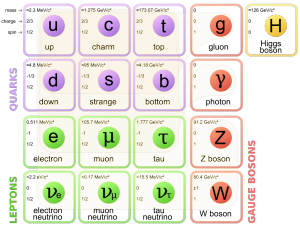The Big Bang model of cosmological evolution is currently the most robust and most supported explanation for the universe. Much like evolution, the Big Bang discusses what happens after the universe forms, not how it appeared initially (though some research explores that as well). So why is the Big Bang so well supported?
The Big Bang model make some very specific predictions. These are not thought experiments, but mathematical descriptions of how the universe should appear during earlier time periods. For example, some prediction made by the Big Bang model include the expansion rate, relative abundance of light elements and their isotopes, the structures of the larger universe (galaxy clusters and superclusters), and the existence of the cosmic microwave background radiation. Each of these predictions has been borne out in more and more detail.
The Big Bang model does make another prediction. One that, until recently, was considered to be untestable. But what is untestable for one generation is a challenge for the next, and a smartphone app for the next.
The prediction is the existence and temperature of the cosmic neutrino background. Specifically “There should be a cosmic neutrino background (CNB) that is exactly (4/11)^(1/3) of the cosmic microwave background (CMB) temperature.”
During the early universe, the particles of the universe where connected together via the weak nuclear force. These were neutrinos, protons, neutrons, and electrons. About one second after the beginning of the universe, the neutrinos decoupled from the rest of matter and began to travel freely through the universe. This is similar to the later cosmic microwave background, but the neutrinos are much less energetic and rarely, very, very rarely, interact with normal matter… making them very difficult to detect.
The estimate for energy for the cosmic background neutrinos is in the micro-electron volt range (0.000001 electron volts). The lowest energy neutrino we’ve ever detected was in the mega-electron volt range (1,000,000+ electron volts). You see the problem.
So, the authors of this paper found a way around the problem. One of the effects of these neutrinos is a subtle phase shift in the temperature/temperature spectrum. This is something I’m not super clear on, but Dr. Follin explained it to me thusly.
Pick a point in the sky. Measure the temperature. Pick another point in the sky some distance away and measure the temperature. Now take the average temperature distance for all points separated by the same distance. Now do that for all distances. The result is called the Plank TT Spectrum.
Sounds like a horrifically complex task to me.
The neutrinos decoupled from matter about 1 second after the formation of the universe. The photons which now form the cosmic microwave background radiation decoupled from matter nearly 380,000 years later. This is important because the neutrinos have been able to move throughout the universe without interacting with matter, while photons kept hitting matter in the early universe. This means that some of the energy from the early universe will be shifted slightly when compared to the rest of the energy. It’s called a temporal phase shift.
However, the neutrinos have, as mentioned, a very low energy. So the contribution of neutrinos to the temperature is very small.
The researchers were able to find the phase shifts caused by the neutrinos. What’s even more interesting is that the authors found three unique shifts, at the same energy as predicted for each of the neutrino types in the Standard Model.
It’s the three Leptons at the bottom; the electron neutrino, the muon neutrino, and the tau neutrino. So, rather independently, this confirms another part of physics.
Plus, this is also independent confirmation of the energy density of neutrinos in other cosmology research.
Plus, there is another sample data set that will be released soon. With that, the authors hope to be able to determine if the temperature of the neutrinos matches predicts (about two degrees above absolute zero). Which will, hopefully, match the prediction I mentioned earlier. If that is the case, then there is further significant evidence that both the Big Bang is correct and we understand it pretty well.

